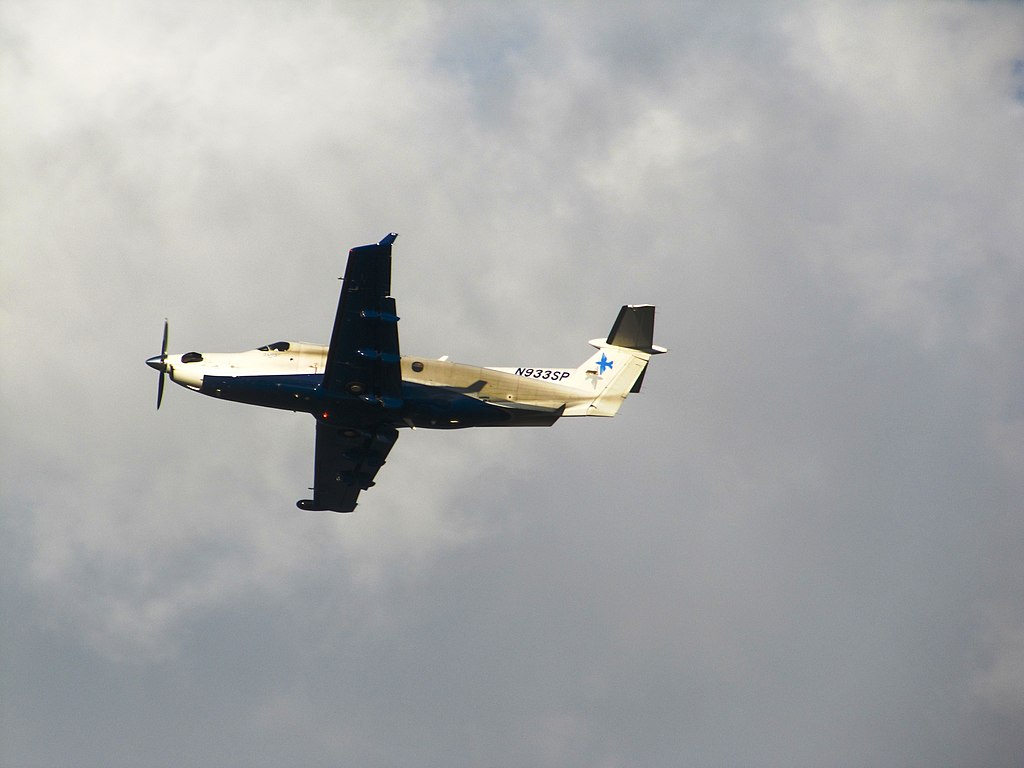From 2008 to 2017, SeaPort Airlines operated out of Portland, Oregon, carving a unique niche in the Pacific Northwest.
Unlike traditional commercial carriers, SeaPort functioned as a feeder airline, linking small, rural communities often overlooked by major airlines. Despite early promise and bold ambitions, operational challenges and bankruptcy halted its journey.
Here’s how SeaPort Airlines came to be and the challenges that ultimately led to its downfall.
SeaPort Takes Off
SeaPort Airlines began operations on 30 June 2008 under CEO Kent Craford and Chairman John Beardsley. The airline’s name was derived from the names of its first two destinations: Seattle, Washington, and Portland, Oregon.
Seaport set up a base at Portland International Airport (PDX), initially operating to and from King County International Airport/Boeing Field (BFI) in Seattle. Flights lasted 90 minutes, cutting travel time in half compared to driving or taking a bus.
The airline launched with three Pilatus PC-12 turboprop aircraft, each accommodating up to nine passengers. Rather than arrive 90 minutes before a commercial flight, passengers could arrive 15 minutes before a SeaPort flight and skip any security checks or other screenings. There were no crowds at Boeing Field, and parking was also free.
The press and public immediately saw the airline’s appeal, which was marketed towards travelers who wanted to buy time.
“I have two kids at home. I don’t want to waste a single minute at the airport,” Slalom Consulting GM and passenger Kory Kimball put bluntly.
One-way fares cost $99, and round-trip fares cost $149. One caveat, however, was that each passenger could only take 35 pounds of luggage.

SeaPort Airlines Goes Mid-South
On 21 October 2008, SeaPort Airlines announced Pendleton, Oregon, as its third destination. The airline received a two-year Essential Air Service (EAS) grant to manage a route between PDX and Eastern Oregon Regional Airport (PDT). PDT operations launched on 1 December of that year.
In 2009, the airline had big plans to expand but also made a major change in management for unknown reasons. In November of that year, SeaPort’s board of directors voted to oust Craford and replace him as CEO with Beardsley.
The previous month, Beardsley’s other company, Historic U.S. National Bank Block, filed for Chapter 11 bankruptcy. The change in leadership, however, was said not to affect SeaPort’s bottom line, as it was making profits and looking to fly to more destinations.
In the Spring of 2010, the airline received a two-year EAS contract to operate routes across various cities throughout the United States. SeaPort’s new routes included:
- Salina Regional Airport (SLN) in Salina, Kansas, to Kansas City International Airport (MCI)
- Boone County Regional Airport (HRO) in Harrison, Arkansas, to MCI
- Memorial Field Airport (HOT) in Hot Springs, Arkansas, to Memphis International Airport (MEM)
Each route had one daily flight from Sunday through Friday. While the airline continued its original PDX-BFI route, its identity became a feeder airline that helped travelers connect to larger commercial flights.
In July 2011, SeaPort added two more routes to its network: Dallas Love Field (DAL) to South Arkansas Regional Airport (ELD) in El Dorado, Arkansas, and DAL-HOT.
SeaPort Faces Challenges
The airline established a regional base at MEM in 2012 to better manage its Mid-South network. The following year, it received EAS contracts totaling over $13 million. These new contracts, however, took it to Southern California, where it would open up routes to San Diego, Burbank, Visalia, and El Centro.
Through 2014, SeaPort Airlines further bolstered its Mid-South network with contracts for Wichita and Great Bend, Kansas; Nashville, Tennessee; Tupelo, Mississippi; and Muscle Shoals, Alabama. Its first and only international destination was San Felipe, Mexico.
Things began to go downhill for SeaPort in 2015, as the airline lost several contracts to competitors. This was a blow for the airline, as it relied on these contracts for its finances. A pilot shortage was why EAS opted to cancel or not renew its SeaPort contracts.
SeaPort Airlines would later cease many more routes in mid-January 2016, followed by closing a North Bend, Washington route. SeaPort Executive Vice President Tom Sieber told the Salina Journal that the airline had only 17 pilots when it needed 54. Many of SeaPort’s pilots would get poached by larger airlines with better pay and incentives, according to Sieber.
The airline filed for Chapter 11 bankruptcy protection the following month while continuing to operate its remaining routes. Chapter 11 would then convert into Chapter 7 liquidation on 20 September 2016, with its Arkansas and Pacific Northwest networks being the last to close with a small number of Cessna 208 Caravans.
Total
0
Shares
Credit: avgeekery.com










